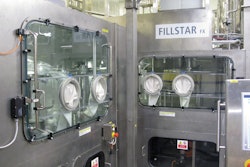Meal kits include fresh produce, uncooked meat or poultry or fish, plus other items used to prepare the meal. The concept is to appeal to people seeking fresh foods that are perceived as more healthful than pre-prepared frozen or thermally processed meals. It also saves time by not having to look for a recipe and shop for the food.
Use of smart or intelligent packaging devices may be a particularly good fit for this market segment. Time/temperature indicators (TTI) already exist and are widely used for cold chain distribution of temperature-sensitive pharmaceuticals and on shipping cases for military food rations. TTIs are not very intuitive for average consumer use, so one that makes it easier for consumers to make a decision regarding freshness would fit better for home meal deliveries. Currently foods shipped via small parcel using Hello Fresh™ or Blue Apron use ice packs to keep fresh produce or fresh meats cold, but what if temperature abuse occurs during distribution? Can consumers still tell if the food is still safe? It is important for foods with mild temperature abuse to be cooked to specific internal temperatures. What if a consumer prefers rare cooked meat? What risks might this carry? Many spoilage sensors have been designed but none that work reliably for very specific foods. In this day of trying to keep food waste to a minimum, a more reliable TTI tied to freshness is needed.
Physical abuse of fresh produce can also decrease shelf life and quality. If produce is shipped in whole form, products such as tomatoes and fleshy fruits may be susceptible to bruising; high water-content produce (i.e. leafy greens and celery) may wilt, leading to loss of texture and loss of water-soluble vitamins. Active packaging solutions such as moisture and ethylene control would help solve some of these problems and would be essential if the fresh produce were pre-sliced or processed in a way to increase respiration rates.
Intelligent packaging can also be used to help manage inventory and orders. Once a consumer uses a product that they order regularly, they could scan the package code with a smartphone and put it in their virtual basket for the next order. Another idea is to also have information built into the scan code on how to recycle the package or perhaps reuse it for the same or another purpose. This could also be tied to an incentive program for the customer where they could earn points for reusing or recycling their packaging that could go toward another purchase or donation to a program of choice.
As with many food packaging challenges, cost will be a major determining factor regarding implementation of active and intelligent (A&I) packaging devices. Reliability and accuracy of spoilage indicators is also a challenge. Finding the right market for which to design A&I packaging is difficult but the home-delivered meal kit market may be one of those niche markets that is a good fit.
Kay Cooksey ([email protected]), PhD, is a Professor and the Cryovac Chair at Clemson University’s School of Packaging.


























